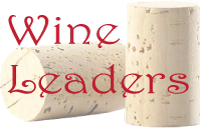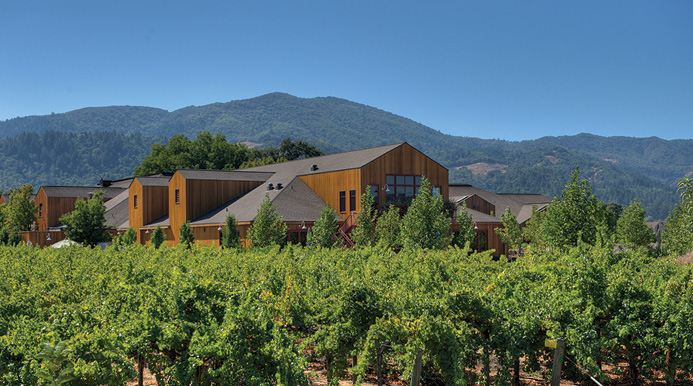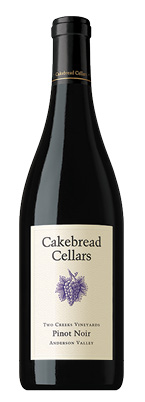- Home
- Media Kit
- Current Issue
- Past Issues
- Ad Specs-Submission
- Ad Print Settings
- Reprints (PDF)
- Photo Specifications (PDF)
- Contact Us


![]()
ONLINE

Balanced Wines
Editors’ Note
Bruce Cakebread first studied Pomology (Tree Fruits) at California Polytechnic University in San Luis Obispo. When he decided to enter the family business, he transferred to the Viticulture and Enology program at the University of California at Davis. After working alongside his father since the winery was founded, Cakebread assumed the winemaking position in 1979, where he was responsible for overseeing all vineyard operations and winemaking duties until 2002 when he became President and COO. He is currently the President of the Napa Valley College Foundation Board, serves on the Viticulture and Enology Executive Leadership Board at U.C. Davis, is an alternate on the Napa County Flood Control District, and is past President of the Board of Napa Valley Vintners Association, serving in 2010 and in 2013.
Winery Brief
Since its founding in 1973, Cakebread Cellars (cakebread.com) has been famous for its warm, gracious hospitality and unmatched wines. With over 40 harvests under their belt and the second generation now running the business, the family winery has become one of the most successful and respected wineries in America, renowned for its world-class vineyards, wines, and hospitality.
Would you talk about the history and heritage of Cakebread Cellars, and how the brand has evolved?
My parents started Cakebread Cellars in 1973 with about four barrels of Chardonnay. My father and grandfather had worked together since 1926 developing an auto-repair garage in downtown Oakland. In the early ’70s, my father, who was also a talented photographer, took a side job taking pictures for a book profiling many of the wine personalities in Napa Valley. While in the area, he stopped in to see some family friends who owned a ranch in Rutherford. Having fallen in love with the area, he made a spontaneous offer to purchase their farm if they were ever interested. As luck would have it, they called my parents later that day and negotiated a deal for the original 22 acres.

Cakebread Cellars in Rutherford, California
California wine in the ’70s was just coming of age. People were learning about wine and food so it was an exciting time to be in the business.
I started working with my dad in 1978 and began as winemaker in 1979, when we were doing about 10 barrels.
In the mid-1980s, my brother Dennis came onboard full-time (he’d worked weekends and harvests for years) to manage the business side of things. Today, he is our VP of Sales and Marketing, as well as Chair of the Board of Directors.
We have evolved over those 40 years and it has been fun to see how Napa Valley wines have grown.
What has been your strategy for finding a sweet spot in the market?
We always make wines that we can drink because if we can’t sell them, at least we can drink them. The hope is that there are other people that will enjoy the results of what we do.
With that, we’ve always shown very nicely balanced wines leading with nice fruit character because we’re blessed with great vineyards in Napa Valley. Today, we have 560 acres of vineyards across 14 very distinct properties throughout Napa Valley and Mendocino County’s Anderson Valley. In addition, we also have a great group of long-term grower partners who we have been working with since we started, and our long-standing relationship with them provides us with continuity of quality.
How has technology impacted the wine-making process?
We’re focused on getting the most potential out of each vine.
In farming, we have been using advanced aerial imagery for a long time, but we now incorporate the latest, state-of-the-art NDVI mapping (“normalized difference vegetation index,” a graphic indicator that is used to analyze measurements) to see where the growth is and how to best manage our irrigation. Figuring out how to use our water in the smartest way at the right time during the growing season has gotten fairly sophisticated.
On the winemaking side, we’ve evolved over the 40 years to where we’re now hand-picking at night and whole-cluster pressing for our white wines. The wines have great potential to age.
Furthermore, what we can measure in the lab today is really exciting in terms of our quality control, which has kept our quality and consistency levels up within the cellar.

Cakebread Pinot Noir
How much have you focused on green practices?
Sustainability is an important aspect of all wineries in Napa Valley – the Napa Green Land and Napa Green Winery programs act as that umbrella for the vineyards: sustainable farming, organic farming, and biodynamic farming all fit under that Napa Green Land program.
We’re really trying to take care of the soils and to make sure the river stays healthy. We have all of our acreage enrolled in the program and should have all 560 acres certified by year’s end. In 2008, we became Napa Green Winery certified.
Our family business is in it for the long term, so we want to be able to take care of our valley and our properties in a responsible way to ensure they can continue to produce great wines 40 years from now.
It’s not only about what we do in the vineyard but also about encouraging our employees to do things like recycling at home.
Would you talk about the continuous investments you make in the vineyard?
We work really hard to develop the vineyards responsibly. We take care of the water that runs off the vineyards so it can return to its natural path to reduce any sedimentation. An example would be using cover crops and compost to not only keep the soil and its nutrients healthy but the surrounding environments as well. If we do that, the vines will be healthy.
In addition, over this past year, we have put in a cutting-edge parking lot, which actually filters the storm water that comes off the property instead of having the water run straight off of asphalt. Filtering this water removes the pollutants, recharges the groundwater supply in the area, and slows the amount of storm water coming off in the creeks in order to reduce flooding.
We have also updated all of our utilities to accommodate micro-turbines that will power the winery. We get a few benefits there: first is its continuous supply of power, which is important because we want to hold the temperature of our barrels at a perfect temperature year-round, and 51 percent of our energy use goes to refrigeration. Next, the micro-turbines will be cheaper to operate. The third win is that we have a smaller footprint of greenhouse gases than if we were using traditional utility electricity.
Ten years ago, all of the landowners in the area banded together to give back to the river. As a result, about a half mile along the Napa River has been widened so when the salmon and steelhead come up through the Pacific Ocean, they have a healthy place to spawn and survive.•